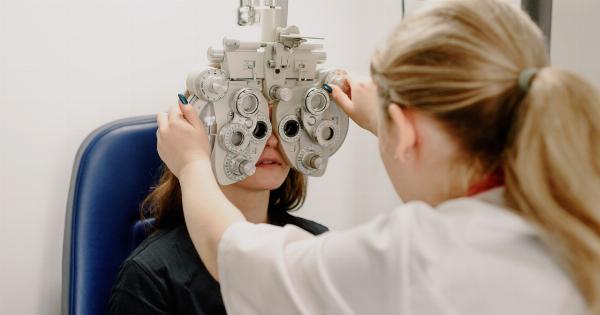Bayer, a global pharmaceutical and life sciences company, is committed to advancing innovative treatments for people living with eye disorders.
Investing in ophthalmology
Bayer’s investment in ophthalmology dates back more than 100 years, with the development of the first eye drops to treat glaucoma in 1902. Today, the company is continuing to prioritize ophthalmology research and development.
According to Dr. Joerg Moeller, Member of the Board of Management of Bayer AG and Head of Research and Development, “Bayer has a long-standing commitment to ophthalmology, a therapeutic area with significant unmet medical need.”.
Bayer’s research and development pipeline in ophthalmology includes treatments for diabetic macular edema, neovascular age-related macular degeneration, and other conditions that can cause vision loss.
The company is also developing a digital therapy for near-sightedness, which affects more than 1.2 billion people worldwide.
These efforts are part of Bayer’s overall focus on healthcare innovation. “We are constantly seeking new ways to improve the lives of patients,” says Moeller.
“We believe that innovative treatments can help address some of the greatest healthcare challenges of our time.”.
Collaborating with partners
To accelerate progress in ophthalmology and bring new treatments to patients, Bayer is collaborating with a range of partners, including academic institutions, healthcare providers, and other innovators in the field.
One recent collaboration is with Geisinger, a leading healthcare system in Pennsylvania.
The two organizations are working together to develop a program for early detection and treatment of diabetic retinopathy, a common complication of diabetes that can lead to vision loss.
“By collaborating with partners like Geisinger, we can bring together the best expertise and resources to advance healthcare innovation,” explains Moeller.
Driving digital innovation
Bayer’s commitment to innovative treatments extends beyond traditional pharmaceuticals. The company is also exploring the potential of digital therapeutics, which use software to diagnose, monitor, and treat medical conditions.
One example is the company’s partnership with Singapore-based Appriss Health, which is developing a digital therapy for near-sightedness. The therapy uses a smartphone app to deliver personalized exercises designed to improve visual acuity.
The potential benefits of digital therapeutics include increased patient engagement, improved precision in treatment, and the ability to monitor patients remotely.
Bayer sees these technologies as key to advancing patient care and delivering better outcomes.
Innovative treatments for a global market
Bayer’s focus on ophthalmology is part of the company’s larger mission to improve the lives of people around the world.
With a presence in more than 100 countries, Bayer is committed to creating innovative treatments that can address healthcare challenges on a global scale.
According to Moeller, “Our commitment to ophthalmology reflects our broader commitment to advancing healthcare for all. We are proud to be part of a community of innovators who are working to improve the lives of people around the world.”.
Conclusion
Bayer’s focus on ophthalmology is driven by a commitment to healthcare innovation and a desire to improve the lives of people living with eye disorders.
Through partnerships, research and development, and a focus on digital therapeutics, the company is advancing new treatments for conditions like diabetic retinopathy, age-related macular degeneration, and near-sightedness. These efforts reflect Bayer’s broader mission to create innovative treatments that can address healthcare challenges on a global scale.




























